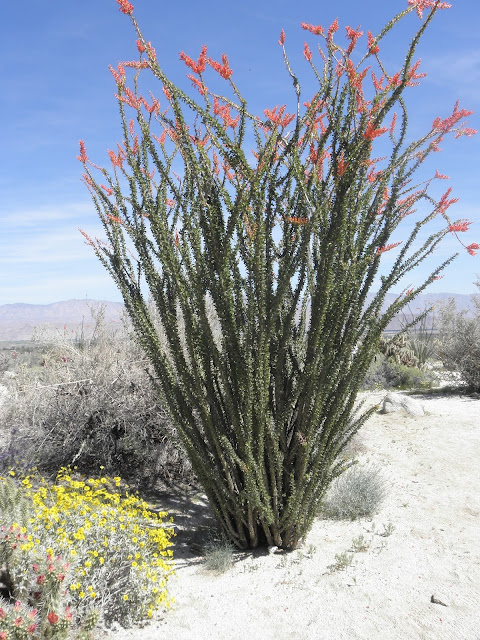I love wildlife gardening myself. Plants are great, but they are even better when the attract wildlife! It adds the element of activity and drama to the garden.
For a wildlife garden, you need plants of different sizes for different functions. One of the best investments you can make in attracting wildlife is to plant a native oak, such as a Quercus engelmannii or Quercus agrifolia. If your garden is not that large, a scrub oak, Quercus dumosa, will be more in scale. Oaks are special as they support more wildlife species and life forms than any other plant--by far! Their ecosystem value is unprecedented. Hundreds of species of organisms have evolved and developed relationships with native California oaks.
So you have your oak planted, what next? Make sure you have a source of water. I know that "water" is not a plant, but when you think about it, water is a scarce commodity in Southern California. Gardens with a water source will definitely attract more wildlife.
 |
| Live Oak Quercus agrifolia |
Now we need a diverse selection of plant material to either serve as nesting locations, sources of food, or sources of shelter. It is true, if you plant it, they will come! I have built many wildlife gardens, and it never ceases to amaze me, the increase in numbers of wildlife species, once the plants are in and growing. If you have a small property, selecting plants with numerous benefits for wildlife is key in maximizing a wildlife garden. For example, planting a native grape, like 'Roger's Red' on a chain link fence will eventually feed bees with pollen, and feed birds, and other wildlife, with fruit. Tiny bees in the Halictidae Family are often not seen, but are important pollinators for this, and other native plants. The tangle of vines can also house nesting birds. It is important to be a messy gardener if you want to provide opportunities for wildlife. Unpruned trees and shrubs provide the density of structure that can keep a nesting bird safe from predators. Also, stacks of branches and/or rocks can house reptiles and other wildlife.
 |
| Vitis 'Roger's Red' |
Another favorite native California tree for wildlife is the California Sycamore. Did you know the fuzz found on the backside of the leaves is a major nest-building material for Anna's hummingbirds? If you have the room, plant this tree too. Another small tree option is Prunus ilicifolia. This slow-growing tree has spine-tipped glossy green leaves and is a beautiful plant, but when you think about the wildlife it attracts, it becomes even more valuable. It has flowers, fruits, and thorny cover for birds. Do you know the Toyon or Heteromeles arbutifolia? This is a great drought tolerant plant. If you have a smaller garden, use this plant as a tree with the Quercus dumosa as another small tree. Toyon is great as it has flowers in the spring that feed many small insects and bees, plus fruit in the fall for the migrating birds. The tree structure can provide nesting sites too.
 |
| California Sycamore Platanus racemosa |
 |
| Attractive Arctostaphylos trunks |
 |
| Ceanothus 'Ray Hartman' |
Smaller shrubs like the evergreen Galvezia speciosa or Island Snapcracker bloom often and are an important hummingbird plant. Another drought tolerant shrub, that is popular with both hummingbirds and bees is Peritoma arborea, with gorgeous golden blooms even when other plants are suffering from drought. No wildlife garden is complete without at least one Salvia. Salvia apiana is a beautiful white-foliaged plant with wands of tiny white flowers popular with hummingbirds and bees alike. Salvia munzii is a small shrub that is drought tolerant and also tolerant of gardener-applied summer water. Salvia clevelandii is native to our area. Other small native shrubs, like Mimulus and California fuchsia, also feed hummingbirds and bees. If you like hummingbirds, Calliandra californica must be included in your wildlife garden. This red-flowered plant is rarely out of bloom and is a dependable nectar source for hummingbirds. Broadcasting poppy seed in the fall will make many native bumblebees happy. Abutilon palmeri is also a "must have" plant, known for its ever-blooming nature and its silver felty foliage.
 |
| Salvia clevelandii |
 |
| Epilobium canum ssp. latifolium |















































